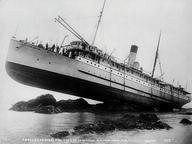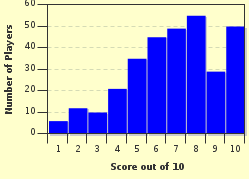Quiz Answer Key and Fun Facts
1. Like much of the world, Canada began 1916 in a state of war. On the night of February 3, it briefly seemed that the war had reached Ottawa when the main building of Parliament burned down. What was the name of this building, which contained the chambers where the House of Commons and the Senate met?
2. Although World War I was raging, the world of 1916 was not a world at war; instead, it was a world at wars, many of them unrelated to each other. One active conflict was the Mexican Revolution, which spilled over into the United States in 1916. Which Mexican general raided New Mexico on March 9?
3. In the years leading up to 1916, China had seen more than its fair share of political upheaval too. The last Qing emperor abdicated in 1912, but assassinations, political crackdowns, and open rebellions spoiled the democratic elections that followed. In the end, one man decided to restore China by declaring himself the Emperor. Who was this general and politician, forced to abdicate on March 22, 1916?
4. "Easter, 1916" has passed into legend and verse; in fact, that's the title of a poem by W.B. Yeats. Easter Week saw a violent uprising by Irishmen opposed to British rule. Which Dublin building was famously the focal point of the rebellion?
5. On May 31 and June 1, 1916, the German and British fleets fought the biggest naval engagement of World War I: the Battle of Jutland. In what body of water did this battle take place?
6. Between July 1 and November 18, 1916, a horrific battle raged around a river in northern France, as German forces faced off against an offensive by the French, the British, and soldiers from the British Commonwealth. Over four and a half months, there were more than a million casualties for a piece of territory whose widest extent was seven miles (11 km). Which battle was this?
7. Technically, the U.S. was at peace in 1916: it wouldn't enter World War I until the next year. Neutrality couldn't keep the war away, though. On July 30, an explosion rocked New York Harbor. What had German agents successfully blown up?
8. September 27, 1916 saw the rise of Empress Zewditu, the first modern woman to serve as head of state of an internationally recognized African nation. Her cousin, regent and heir was later to become Emperor Haile Selassie. What country did Empress Zewditu call home?
9. That wasn't it for female empowerment in 1916! On November 7, the people of Montana elected Jeannette Rankin to represent them in the U.S. House of Representatives. She was the first woman to serve as a member of Congress, but her achievement was made still more impressive by what salient fact?
10. The Russian Revolution, still months away, was heralded by a murder in Moscow on December 29, 1916. What dissolute and widely reviled man, a confidant of the Tsarina, was the victim?
Source: Author
CellarDoor
This quiz was reviewed by FunTrivia editor
bloomsby before going online.
Any errors found in FunTrivia content are routinely corrected through our feedback system.

